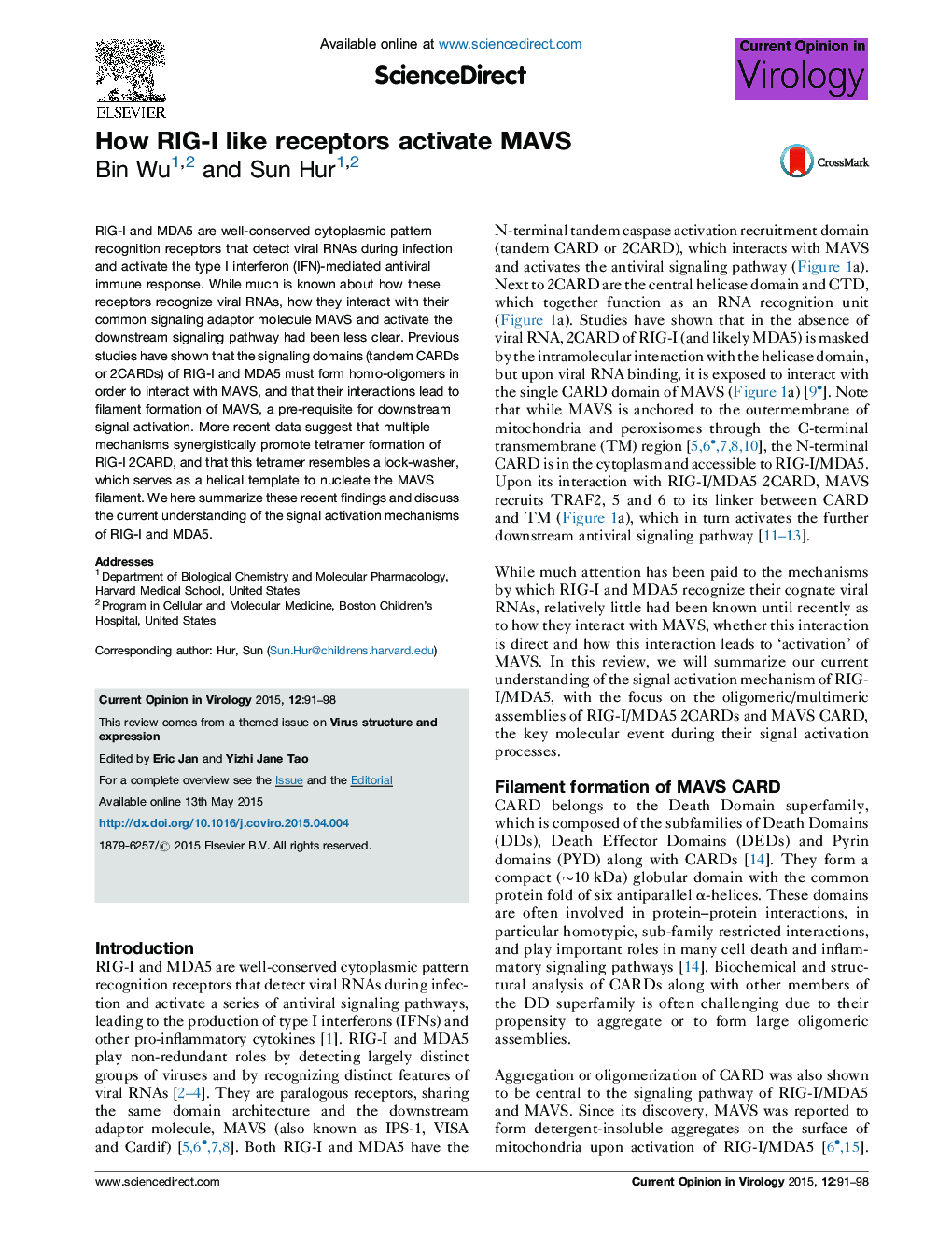| Article ID | Journal | Published Year | Pages | File Type |
|---|---|---|---|---|
| 5806702 | Current Opinion in Virology | 2015 | 8 Pages |
â¢RIG-I and MDA5 oligomerize the respective 2CARDs upon viral RNA recognition.â¢There are ubiquitin-dependent and ubiquitin-independent mechanisms to oligomerize 2CARDs.â¢RIG-I 2CARD forms a lock-washer-like tetramer.â¢The 2CARD tetramer serves as a helical template for nucleating the MAVS filament.
RIG-I and MDA5 are well-conserved cytoplasmic pattern recognition receptors that detect viral RNAs during infection and activate the type I interferon (IFN)-mediated antiviral immune response. While much is known about how these receptors recognize viral RNAs, how they interact with their common signaling adaptor molecule MAVS and activate the downstream signaling pathway had been less clear. Previous studies have shown that the signaling domains (tandem CARDs or 2CARDs) of RIG-I and MDA5 must form homo-oligomers in order to interact with MAVS, and that their interactions lead to filament formation of MAVS, a pre-requisite for downstream signal activation. More recent data suggest that multiple mechanisms synergistically promote tetramer formation of RIG-I 2CARD, and that this tetramer resembles a lock-washer, which serves as a helical template to nucleate the MAVS filament. We here summarize these recent findings and discuss the current understanding of the signal activation mechanisms of RIG-I and MDA5.
